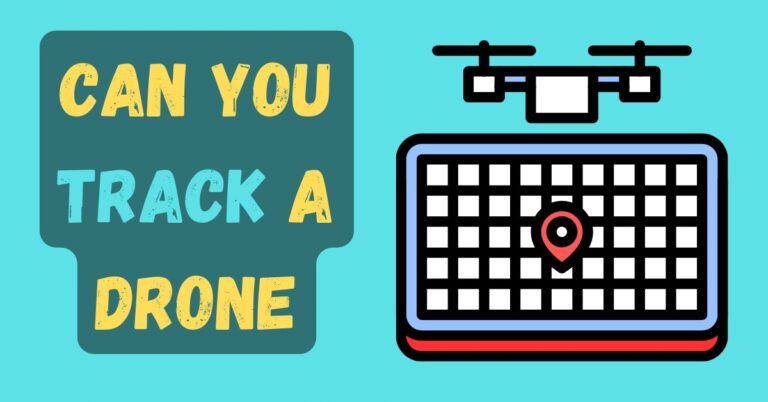Beyond Aerial Imaging: How Drones Are Revolutionizing Agriculture

In recent years, the integration of drones into agriculture has marked a significant technological evolution, transforming traditional farming practices.
Initially regarded as tools primarily for aerial imaging, drones have rapidly evolved to become indispensable assets in modern agriculture.
Their ability to provide precise data, reduce labor costs, and enhance productivity has driven their adoption across diverse farming operations.
The technological advancements in drone design and functionality have made them more accessible and versatile for agricultural use.
From small, lightweight quadcopters to larger, fixed-wing models, drones now come in various forms tailored to specific agricultural needs.
These innovations have expanded their application beyond simple aerial imaging to include tasks such as crop monitoring, soil analysis, and even planting and spraying.
One of the most significant advantages of drones in agriculture is their ability to collect high-resolution data quickly and efficiently.
Farmers can use drones equipped with multispectral and thermal sensors to monitor crop health, detect disease outbreaks, and assess irrigation needs.
This data-driven approach allows for more precise and timely interventions, ultimately leading to higher yields and better resource management.
Moreover, the use of drones for tasks such as planting and pesticide application has introduced a new level of automation in agriculture.
Drones equipped with specialized attachments can plant seeds and apply fertilizers or pesticides with pinpoint accuracy, reducing waste and minimizing environmental impact.
This automation not only saves time and labor but also ensures that resources are used efficiently.
As we delve deeper into the various applications of drones in agriculture, it becomes evident that their role extends far beyond aerial imaging.
The subsequent sections will explore these applications in detail, showcasing how drones are revolutionizing different aspects of farming and contributing to a more sustainable and productive agricultural industry.
Intrigued by the potential of Ornithopters? Dive deeper to see if they could be a more efficient alternative to drones for specific tasks: [Could Ornithopters be a More Efficient and Effective Alternative to Drones in Certain Tasks?]
Advanced Crop Monitoring and Analysis
The advent of drones in agriculture has ushered in a new era of precision farming, particularly in the realm of advanced crop monitoring and analysis.
Utilizing multispectral and hyperspectral sensors, drones are capable of assessing crop health with unprecedented accuracy and efficiency.
These sensors capture data across various wavelengths of light, enabling farmers to detect diseases, monitor plant growth, and evaluate the overall health of their crops.
This technology provides insights that are far more detailed than traditional methods, allowing for timely and targeted interventions.
One of the key benefits of using drones for crop monitoring is the ability to collect real-time data. This immediate access to information empowers farmers to make informed decisions regarding irrigation, fertilization, and pest control.
For instance, by analyzing the spectral data, farmers can identify areas of the field that are experiencing water stress or nutrient deficiencies.
Consequently, they can adjust their irrigation schedules and fertilizer applications to address these issues promptly, thereby optimizing resource usage and enhancing crop yields.
In terms of specific technologies, companies like DJI and Parrot have developed drones equipped with advanced sensors tailored for agricultural use.
DJI’s Phantom 4 Multispectral drone, for example, integrates a multispectral imaging system that captures data across six different wavelengths.
This enables farmers to generate detailed vegetation index maps, which are instrumental in monitoring crop health and detecting early signs of disease.
Case studies have demonstrated the tangible benefits of drone technology in agriculture. In a study conducted in Spain, the use of drones for vineyard monitoring resulted in a 10% increase in grape yield.
The drones provided precise data on plant health, allowing vineyard managers to implement targeted treatments that improved overall crop performance.
Similarly, in the United States, a large-scale corn farm reported a 15% boost in yield after integrating drone-based monitoring into their farming practices.
Overall, the integration of drones into crop monitoring and analysis represents a significant leap forward for the agricultural industry.
By providing detailed, real-time data, drones enable farmers to make smarter, more efficient decisions, ultimately leading to healthier crops and higher yields.
Wondering if Holy Stone drones are the right choice for you? Check out our in-depth review to find out! [Are Holy Stone Drones Good? A Comprehensive Review].
Precision Agriculture and Automated Farming
Drones are increasingly becoming pivotal in the realm of precision agriculture and automated farming, transforming traditional farming practices with their advanced capabilities.
One of the most notable applications is in precision planting. Drones equipped with high-resolution cameras and GPS technology can map fields with exceptional accuracy, identifying optimal planting zones.
This ensures that seeds are planted at the correct depth and spacing, promoting uniform growth and maximizing yield potential.
In addition to planting, drones play a crucial role in precision spraying. They can be programmed to apply pesticides, herbicides, and fertilizers with pinpoint accuracy, targeting specific areas that require treatment.
This targeted approach not only reduces the amount of chemicals used but also minimizes environmental impact and reduces costs.
For instance, a farm in Iowa has reported a 30% reduction in pesticide use after integrating drone technology into their spraying practices.
Soil analysis is another area where drones excel. By capturing multispectral images of fields, drones can assess soil health, moisture levels, and nutrient content.
These insights enable farmers to create variable rate prescriptions for inputs like seeds, fertilizers, and pesticides.
Consequently, resources are used more efficiently, and crop health is optimized. A vineyard in California has successfully employed drones for soil analysis, resulting in a significant increase in grape quality and a reduction in water usage by 20%.
The integration of drones into precision farming practices not only enhances efficiency but also reduces waste and optimizes resource use.
For example, a large-scale corn farm in Nebraska has leveraged drone technology to monitor crop health throughout the growing season, leading to a 15% increase in yield.
These advancements underscore the transformative potential of drones in agriculture, paving the way for more sustainable and productive farming methods.
Curious about what factors affect the performance of drone motors? We’ve got you covered! Read our guide to learn more.
Future Potential and Challenges
Drone technology in agriculture is poised to undergo significant advancements, promising to reshape the sector profoundly.
One of the most exciting developments on the horizon is the concept of swarm robotics, where multiple drones can work in unison to cover larger areas more efficiently.
This technology could lead to more comprehensive and quicker data collection, thereby enhancing decision-making processes for farmers.
Swarm robotics, when combined with AI integration, holds the potential to revolutionize crop monitoring by providing real-time insights and predictive analytics.
AI-powered drones can analyze vast amounts of data to identify crop diseases, pest infestations, and soil health issues with unprecedented accuracy.
Another promising avenue is the advent of autonomous drones. These drones can operate independently, performing tasks such as planting, spraying, and harvesting without human intervention.
The increased productivity and efficiency from autonomous drones could lead to substantial cost savings and more sustainable farming practices.
For instance, precise application of fertilizers and pesticides reduces waste and minimizes environmental impact, promoting a more sustainable agricultural ecosystem.
However, the integration of advanced drone technologies into agriculture is not without challenges.
Regulatory issues represent a significant hurdle; varying regulations across regions can impede the widespread adoption of drones.
Additionally, the high initial costs associated with advanced drone systems may be prohibitive for small-scale farmers.
There is also a steep learning curve involved, as farmers need to acquire technical expertise to operate and maintain these sophisticated machines effectively.
Despite these challenges, the ongoing innovations and continuous improvements in drone technology offer a promising future for agriculture.
As regulatory frameworks evolve and become more drone-friendly, and as the cost of technology decreases, more farmers will be able to harness the benefits of drones.
The future of agriculture is likely to be characterized by increased efficiency, greater sustainability, and enhanced productivity, driven by the continuous evolution of drone technology.







